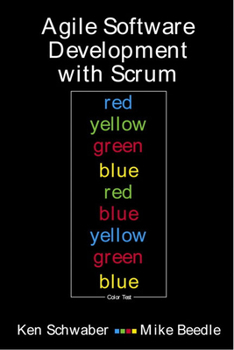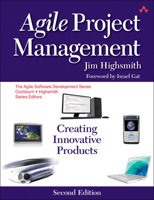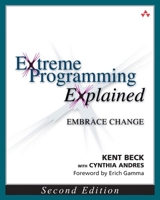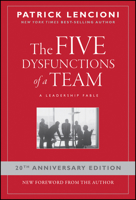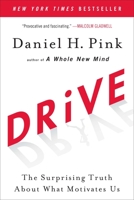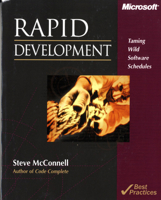Agile Software Development with Scrum
Select Format
Select Condition 
You Might Also Enjoy
Book Overview
Customer Reviews
Rated 5 starsThe book that introduced the world to SCRUM
Schwaber and Beedle are the co-developers of the software project management methodology known as SCRUM. This book was their first on the subject, and it did a worthy job of convincing me that this particular flavor of agile project management might help ameliorate some of the problems I see on a regular basis with my projects. Although the writing style can be disjointed and opaque at times, the essence of SCRUM comes through...
0Report
Rated 5 stars"THE" Critical Success Factor in getting things done right
Some day, practitioners of any field will regret they did not read this book, apply it, and reap the benefits. Until that occurs the readers of this book will have an 'unfair' advantage in the markets that exists and are being envisioned. Written from personal experience, Ken and Mike have unambiguously challenged what traditional management wishes would happen with a lucid description of the core activities that make some...
0Report
Rated 5 starsGreat book, wish I had it earlier
SCRUM is a "light weight wrapper" of techniques to manage and guide your software projects. Actually, you could use it on a lot of other types of projects, but software is its best use.What's unique is that it wraps around the "Design it first" school that I follow, as well as the Extreme Programming (XP) school that follows a proto-typing approach.SCRUM provides the mechanisms for organizing and controlling the development...
0Report
Rated 5 starsWhy you've been using the wrong process control model
If you've survived software projects that have gone schizophrenic after doing a lot of up-front planning, you may find that chapters 2 and 5 are worth the price of the book. Those chapters compare two process control models: the "defined" model, which is the basis for most methodologies, and the "empirical" model, which is the basis for SCRUM. Knowing the difference between these process control models, and their implications...
0Report
Rated 5 starsGreat for learning how to complete projects faster/better
This is the book I've been wanted for years. Until this book, the Scrum development process was not very well known and was documented only piecemeal in a couple of papers and websites. Finally, there's a book a that covers everything you need to know to run your software project using Scrum.Schwaber is the "Godfather of Scrum" and essentially invented the techniques; Beedle was one of the first converts to Scrum and together...
0Report











